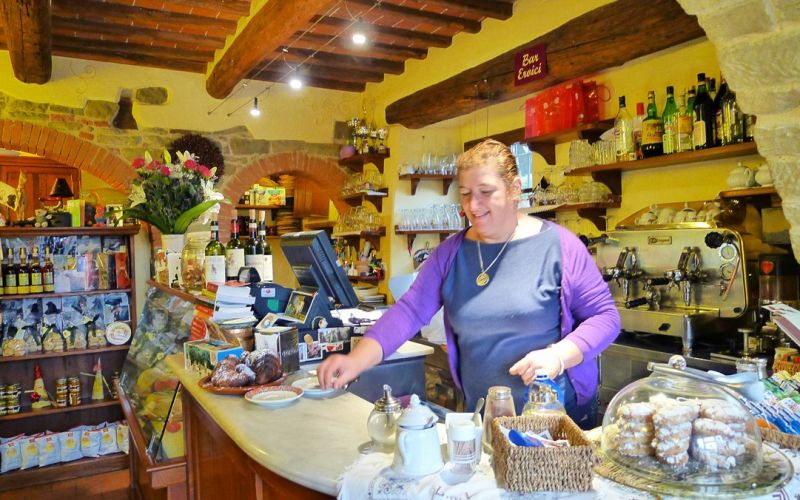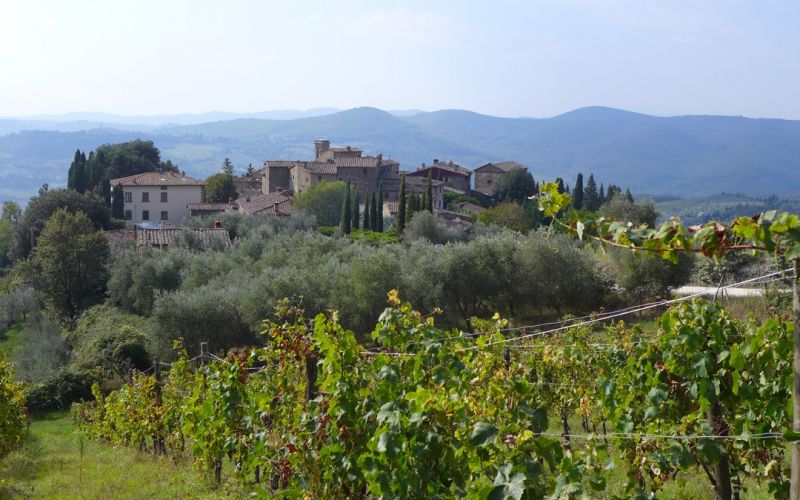Chianti off the beaten track
Discovering Chianti off the beaten track, this is what Villa le Barone offers to you. Itineraries on foot, by car, or by bike have been prepared for guests, and will take them away from the places where tourists gather, allowing them to discover magnificent secret places!
One of the routes for example, takes guests to Volpaia, a hamlet whose origins probably date back to the 12th century. Located, as Panzano, on the border between the Republics of Siena and Florence, the village is hit by the rivalry between the two republics and is the theater of particularly fierce fighting throughout the fifteenth century. It is necessary to soak up the atmosphere of this medieval village on the top of a Chianti hill, to stroll along the narrow back streets, to admire the superb doors, and to stop on the terrace of the so nice cafe BAR-UCCI, on a small square.
The route then takes you to the small church of Santa Maria Novella, following a small road lined with cypresses, vineyards and olive groves. This church is considered as one of the most remarkable examples of Romanesque architecture on the territory of the Florentine countryside, yet very few people come to see it! It is indeed difficult to visit the interior, yet beautiful, but it is necessary to admire it from the outside. Around the church, admire the centuries-old mulberry trees.
The region has been producing silkworms since the 15th century. And what a view of the hills and the village of Radda at the top of one of them, with vineyards, cypresses, forests... One is overwhelmed by the beauty of the place. The splendor of Chianti has been celebrated at all times, but our guests are saying that the reality is even more beautiful than what they could imagine!
The parish church of Santa Maria Novella is a religious building located in the town of Radda in Chianti. Although semi-unknown, due to its characteristics it is considered one of the most remarkable examples of Romanesque architecture in the territory of the Florentine countryside. In it are concentrated all the characters that form the expressive, structural and formal language of Romanesque art of the twelfth century













